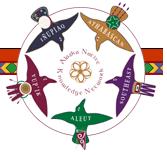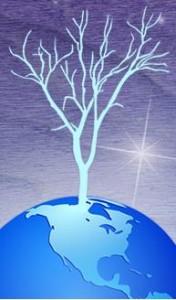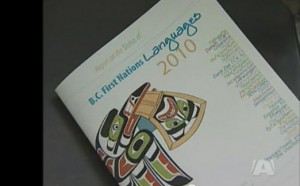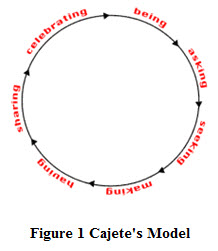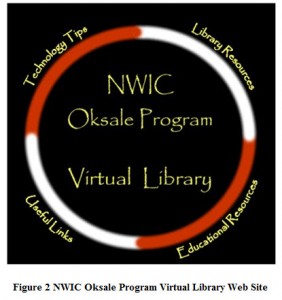Based at the Univeristy of Missouri’s Center for Studies in Oral Tradition the Oral Tradition Journal has been in print since 1986. Recently they stopped publishing the print version and are focused primarily on the digital space, which is interesting in itself. The international focus of the journal and interdisciplinary approach makes this a treasure trove for research on oral traditions. There is a large amount of information dedicated to Judaism, Christianity and Islam but articles include studies on a wide variety of oral traditions, including those of North American First Nations. The site is extremely easy to search and some of the most relevant information I’ve found for this course come from this source.
Tag: first nations
Stories of Our Elders
Stories of Our Elders is a website dedicated to telling both the experiential and mythological/ traditional stories of the Cree and Ojibway people. The site takes a very innovative approach to archiving 22 stories in written, digital audio, and digital video formats all provided in both English and Cree or Ojibway. There’s also a small but interesting set of historical photographs related to the stories and storytellers and a map with detailed information about the tribes involved.
In addition to providing a very interesting set of stories told by a variety of respected elders and community members, the site also offers users tips on moving forward with similar projects. They specifically address difficulties related to embedding syllabic fonts, which would be useful for anybody working on a multilingual web project, as well as tips for acquiring funding to pursue these types of projects.
BC Broadband Access Map
Here is a link loosely related to the one of the threads in Discussion #4. The link shows communities in BC that DO NOT have access to broadband.
I was discussing this with an IT Director earlier today and he relayed to me that he has been to three First Nations communities in the last six weeks that actually have broadband access, but didn’t even know it. Apparently companies like Telus can access federal funds to provide this infrastructure to reserves but have no obligation to help the bands get it up and running. You’d think there would be some motivation considering the outrageous monthly rates they charge.
Alaska Native Knowledge Network


This site states its purpose as “resources for compiling and exchanging information related to Alaska native knowledge systems and ways of knowing.” There are lot of resources concerning curriculum, information on cultural research systems, and cultural maps.
4 Directions Teachings
http://www.edu.gov.on.ca/eng/literacynumeracy/inspire/research/Toulouse.pdf
This Ontario Government document from March 2008 suggests research-based strategies and practices for integrating Aboriginal teachings and values into the classroom. I often find myself wondering if the content is accurate and appropriate as claimed, coming from a government office. At a glance, the information seems to touch on the First Nations Grandfather teachings and the medicine wheel, so it seems appropriate. If anyone has any comments on the value or relevance of the information, I would welcome comments. Thanks!
Saving First Nations Languages
This You Tube video talks about the status of First Nations languages in B.C. The commentary is based on the recently released “Report on the Status of B.C. First Nations Languages 2010”. This First Peoples Council report states that the Vancouver Island First Nation languages are in a “critical state” and further that there is an “urgent need to protect BC’s 32 First Nations languages. Of these languages, a handful are stated to be “severely in danger” with the majority being already nearly extinct. To put this in perspective, BC is reportedly home to 60% of the Indigenous languages of Canada.
The video clip includes interviews with a Central Saanich student, a Lauwelnew Tribal School Teacher and a Tsartlip Elder. Some positive steps towards language recovery are also described.
To view the video: https://www.youtube.com/watch?v=KzfgvqkoTVM
To view the report: www.fphlcc.ca
This article describes how students in the “Library Instruction and Information Literacy” class in the Graduate School of Library and Information Science at the University of Texas at Austin incorporated a service-based learning model drawing on indigenous learning styles to create a virtual library for students and educators at a tribal college. The project deliverables were planned for the Northwest Indian College (NWIC) Teacher Training Program, Oksale and were based on the theories of Native American educator Dr. Gregory Cajete.
Cajete’s theory describes the prescription for a fulfilled life through the cycle of “being, asking, seeking, making, having, sharing, and celebrating”. This cycle was seen as a means to understand (in Cajete’s words):
- One’s true face (character, potential, identity)
- One’s true heart (soul, creative self, true passion)
- One’s foundation (true work, vocation)
The design of the site (see Figure 2) used traditional Lummi colors (black, red, white, and yellow) and images (raven, frog, eagle, and salmon) to increase users’ familiarity and comfort with the site.
Cajete asks educators to “engender a commitment to service rather than competition, promote respect for individual, cultural, and biological diversity, and engage students in learning processes that facilitate the development of their human potential through creative transformation”.
This is an interesting paper offered by the Caledon Institute that discusses the 2008 perspective on the present state of education for on reserve students, the Canadian Federal Government’s stance to this condition, and a prescription for improving education for on reserve students. This paper provides a really good summary and makes for interesting reading. The following is a very brief synopsis.
Present State (2008) and Canadian Government’s Stance
- 1996 – 60% of First Nations on reserve residents aged 20-24 had not completed high school or obtained an alternate diploma. (From Canadian Census data)
- 2001 – Statistic was unchanged.
- 2006 – Statistic was unchanged.
- Students now require more than grade 12 education to succeed, however grade 12 is the gateway to higher education.
- Canadian government (Indian and Northern Affairs Canada 2004) is in unanimous agreement on the desperate need for improvement in education for those living on reserves.
- Data suggests that funding for on reserve education is similar to provincially funded schools although this is not the perception of First Nations peoples.
- There is consensus on the need for parity for First Nations schools.
Prescription for Improving On Reserve Education
- Agreement that there is a need for money + good schools
- There is also a need for the infrastructure to support and maintain a good education system addressing the areas of curriculum development and capital facilities planning.
- The Cree School Board, recognized under the Quebec Education Act is an example of such a system.
- For those interested, there is the following reference to additional models: “Sharing Our Success: Ten Case Studies in Aboriginal Schooling” (page 11)
- The paper goes on to describe the background and role of the First Nations Education Authority Act that seeks to address the need for First Nations infrastructure planning across the Provinces.
http://www.caledoninst.org/Publications/PDF/684ENG.pdf
—————————————————————————————
For more information about the Caledon Institute, here is a brief summary quoted from their Website:
The Caledon Institute is a social policy think tank.
“Established in 1992, the Caledon Institute of Social Policy is a private, non-profit organization with charitable status. It is supported primarily by the Maytree Foundation, located in Toronto. Caledon is an independent and critical voice that does not depend on government funding and is not affiliated with any political party.
The Caledon Institute of Social Policy does rigorous, high-quality research and analysis; seeks to inform and influence public opinion and to foster public discussion on poverty and social policy; and develops and promotes concrete, practicable proposals for the reform of social programs at all levels of government and of social benefits provided by employers and the voluntary sector. Caledon’s work covers a broad range of social policy areas including income security (e.g., pensions, welfare, child benefits, Employment Insurance, benefits for Canadians with disabilities), community capacity-building, taxation, social spending, employment development services, social services, disability supports and health.”



